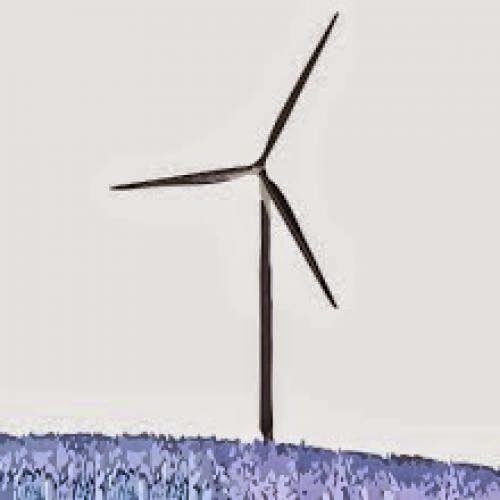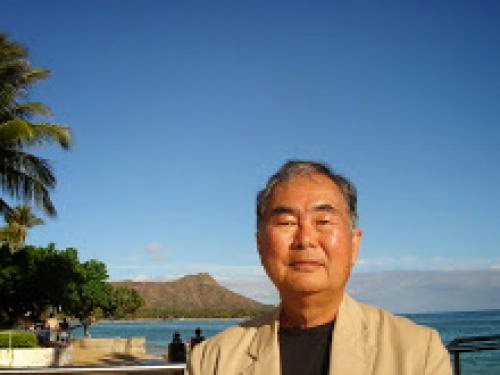A typical stand-alone system consists of solar panels and or a small wind turbine to generate electricity connected to a charge controller which controls the pace at which batteries are recharged which is connected the battery bank. You will then need an off-grid inverter to convert the DC (Direct Current) electricity stored in the battery bank to AC (Alternating Current) electricity which is more commonly used in home appliances.
Years ago the high cost and poor reliability of early off-grid systems discouraged many except for the hardiest pioneers. Today solar, wind and hybrid systems have become so main stream that even families well within the utility power line reach are choosing to go off the grid.
At Blue Pacific Solar we believe that with the improvements in modern off-grid inverters, energy efficient lighting, propane and DC appliances, cheap price of quality solar panels and careful design considerations means stand-alone systems need not rely on backup fossil fuel generators.
The starting point in planning your system is to first reduce demand. Click on this link Off-Grid then click on the tab "Living Energy Conservation" for some tips.) Most people in America can easily cut their electricity consumption in half. Reducing your family's energy consumption by conserving and investing in watt saving home lights and efficient appliances means you are putting your money in your pocket and can substantially reduce the amount of off-grid equipment and or battery bank. As you begin your journey towards freedom from the grid, start by conserving as much as possible first. Its always cheaper to save electricity than to generate electricity. Most off-grid generation is used for lighting, appliances like refrigerators and water pumping. Lighting is the easiest to tackle. Don't stop at compact florescent lights, go all the way to LED which can use 1/6th the watt consumption of compact florescent lighting.
Here are some questions your will need to answer to get started choosing the right off-grid system for you:
* List your loads. How many watts per day do you expect your equipment to consume? The most important challenge in an off-gridsystem is to balance your energy consumption with your solar or wind turbine energy supply. TIP: No easy way around this so get out a pencil and start listing everything you want to run and how long you usually run it. IE: 5 - 13 watt light bulbs X 5 hours per day = 65 watts. THIS IS IMPORTANT: When we say "list your loads", we mean all your loads from the cell phone chargers to a hair dryer. How many days without sun or wind do you want to be able to run? (Days of Autonomy)
* What is the largest load you expect to run (Watts / Amps / Volts IE: 240V Well Pump @ 9.5 Amps)
* What is your budget?
TIP; The use of energy-efficient appliances and lighting, as well as non-electric alternatives such as a propane stove and refrigerator should be considered first. Every watt you save will help to lower the cost of your off-grid system.
With a little head scratching you can save yourself thousands of dollars by only purchasing the off-grid solar electric system you need without over purchasing.
Credit: energy-news-blog.blogspot.com
For more hydrogen fuel cell news articles.
Share on Tumblr
SOLAR-ABSORBING MATERIALS EFFICIENTLY SOAK UP VISIBLE LIGHT.
University of Toronto researchers are studying perovskites in its purest form, and this new material, which excels at absorbing visible light, could be ideal for solar power because it could make solar panels more efficient and less expensive.
A NEW TECHNIQUE WAS USED BY RESEARCHERS TO GROW PEROVSKITES.
Professor Ted Sargent of the Edward S. Rogers Sr. Department of Electrical ">perovskites in a way that they have not been studied before - as perfect single crystals - the material's purest form.
The researchers grew perovskites using a new technique and observed how light is transformed into electricity by analyzing how electrons move through the material. They used a combination of techniques involving lasers to measure certain properties of the perovskite crystals. Through their study, the researchers were able to track down the fast motion of electrons in the perovskites. This resulted in the team being able to figure out the mobility and the diffusion length.
"Our work identifies the bar for the ultimate solar energy-harvesting potential of perovskites. With these materials it's been a race to try to get record efficiencies, and our results indicate that progress is slated to continue without slowing down," said Riccardo Comin, a post-doctoral fellow with the Sargent Group.
In Addition To More Efficient Solar Power Panels, Perovskites May Also Increase The Efficiency Of LEDs.
In recent years, perovskite has increased in efficiency by more than 20 percent. To put this into better perspective, its level of efficiency is very close to the commercial-grade silicon-based solar panels that currently perform the best. These panels can be found mounted on roofs in California and in Spanish deserts.
The reason that perovskite is so efficient is light is absorbed when it comes in contact with the material and exits the materials' electrons. These electrons are gathered in the form of electric current once they travel through the material to electrical contacts on the opposite side. What the research team found was that if the sequence occurs in the reverse order, the material will release energy as light.
This discovery also revealed that perovskite may not only be beneficial for solar power, but could make LEDs more efficient, as well.
For more alternative energy news headlines today.
POLITICS OF OTEC
-
"Earlier, it was reported that I helped with the drafting of the original ocean thermal energy conversion (OTEC) legislation in Congress, which became law in 1979. If the Blue Revolution ever develops, the whole concept will depend on OTEC. The following is excerpted from Chapter 4 of "SIMPLE SOLUTIONS for Planet Earth.
-
When I first was exposed to OTEC in the mid 1970s, I was a skeptic. I even submitted an environmental impact statement questioning the potential effect on the coastal region. Having experienced the birth of the legislation, though, and realizing that this technology could well be the key to the success of the Pacific International Center for High Technology Research (PICHTR) and a tonic for the planet, I became not only a supporter, but self proclaimed savior.
The U.S. Department of Energy and the Japanese Ministry of International Trade and Industry abhorred this energy option. On the Japanese side, the money to PICHTR came from the Ministry of Foreign Affairs. In the U.S., the funds were stuffed down the throat of the USDOE by Congress, and this was some achievement in the mid-80's, as Ronald Reagan had virtually shut down the solar program. Hawaii ended up with all the meager OTEC funds because our only competition came from Guam and the Caribbean, neither which had a real congressional member. Sea Solar Power of Maryland made a run for some funds, but never made it to first base. Part of this was a ploy we by chance stumbled into that changed the whole nature of the game.
The USDOE director of wind/OTEC programs in those days, Leonard Rogers, had a drink with Louis Rotundo (yes, that same individual who saved the hydrogen program--Chapter 3) of the Florida Solar Energy Center and me at Trader Vic's in the District. Rogers came right out and said he was closing the program down because the government had done all it could for closed cycle OTEC and now it was up to industry to pick it up. There was nothing more to research. In a leap of logic that still astounds me, Louis says, "what about open cycle OTEC?" Len was not too up on this technology, so I explained that open cycle did not use ammonia or Freon and produced freshwater as a by-product. The whole system had been abandoned since Georges Claude's experiment 60 years ago, but today would have a lot more potential because most of the OTEC areas in the world with electricity needs also could use potable water. No one had done any turbine research and it was time to work out an internationally cooperative program for developing nations. In those days international partnerships and helping deprived areas were not of high priority for our Federal government. However, there was something about this "new" technology that gained Len's attention. I did tell him that I would leverage his input with funds from Japan, and that seemed to be a plus. In hindsight now, open cycle made no sense for larger OTEC activities because of the inefficiency of this cycle. But it did serve an important bridge to develop the technology.
So the USDOE totally adjusted its objectives and PICHTR proceeded to gobble up all the OTEC funds because there was no competition in open cycle OTEC. I recruited Lloyd Trimble, who was with Lockheed on the Mini-OTEC project, Luis Vega and Gerard Nihous, who had a small company in Berkeley, California, and a bit later, Andrew Trenka, who once managed the OTEC project out of the Solar Energy Research Institute in Golden, Colorado. They hired a staff and we just re-invented open cycle OTEC.
In 1988 I engineered the publication of a paper entitled, "Converting OTEC for Commercial Use in the Pacific," with Leonard Rogers as the lead author and Fujio Matsuda, Luis Vega and I as co-authors. It was published in "SEA TECHNOLOGY", and sealed the deal for the PICHTR group, which proceeded to gain 22.2 million from the USDOE, 4.5 million from the State of Hawaii and 8.2 million of others (including Japan, of course). The 210 kW (gross, 40 kW net) open cycle system saw groundbreaking in 1991 at the Natural Energy Laboratory of Hawaii Authority and full operation, with freshwater, in 1994. The system actually produced 103 kW of maximum net power.
At around this time, about a decade after Paul Yuen and I first thought up the concept of this international technology transfer organization, I parted with PICHTR. The University of Hawaii had continued to pay my salary while I directed the Hawaii Natural Energy Institute, so I was helping PICHTR on a pro bono ("I did it for free") basis. There were new fields to conquer, as I was named to the U.S. Secretary of Energy's Hydrogen Technical Panel and began championing the Blue Revolution and Green Enertopia. In parallel, I had intitiated the effort and laid the foundation for PICHTR eventually garnering 20 million for a biomass to methanol project.-Oil slipped to 114/barrel, and, expectedly, the DJI jumped 83 to 11616.-Kika is now a remnant and far southwest of Hawaii. Tropical Depression Hernan continues to move towards a point south of the Big Island, and should dissipate over the next few days. Tropical Storm Iselle is expected to track westward on the 20th parallel, meaning if this direction continues, it will run into the Big Island. However, weakening is projected.-
















